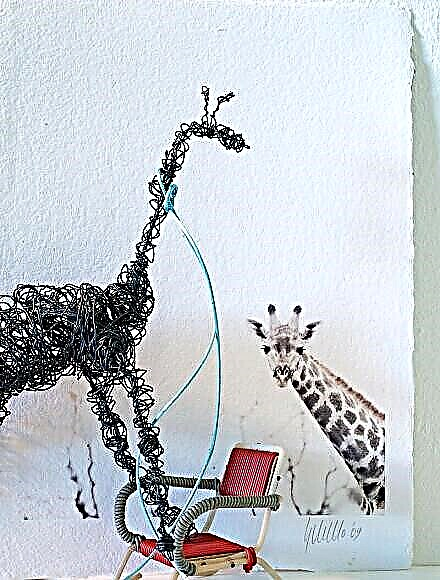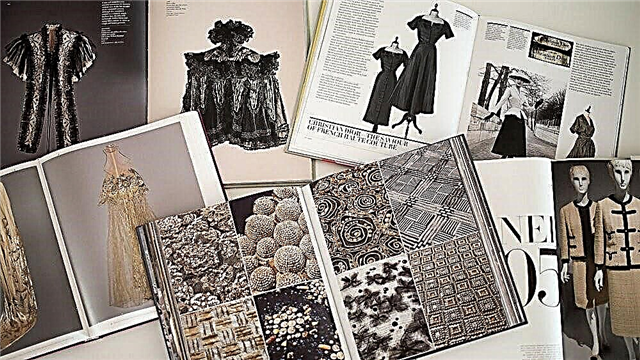Share
Pin
Tweet
Send
Share
Send
How to sew a patch pocket on the lining so that the stitching line is not visible? Most often this is done by hand - sew a pocket on a coat or jacket with small hidden stitches.
But this method is not very reliable, since the manual stitching is not durable and can be torn while wearing the finished product.
In this master class, we will consider an invisible way to handle haute couture. Such a way to grind a pocket on a lining is little known, but it is most popular among professionals.
You will need:
- the cloth
- Lining
- Adhesive pad
- Pocket pattern
- Needle, pins, thread, scissors
- Marking tool (crayon, aqua pen or pencil)
A seam pocket like Max Mara: a master class
Step 1

Cut out details of a pocket with a one-piece edging 4 cm wide with 1 cm allowances.
Step 2

Strengthen the liner with adhesive. In this case, this is a duplicate.
If, due to the location of the pattern, the pocket is cut out obliquely or if you have loose fabric, the entire pocket along with allowances are reinforced with glue.
Mark the contours of the pocket according to the pattern.
Step 3

Cut from the pattern double width of the stitching. This will be a pocket lining pattern.

Cut out a lining with 8 mm allowances. Thus, it is 2 mm smaller than the pocket along the contour. This is necessary so that in the finished pocket the lining does not peek around the edges.
Step 4

Lining face-to-face on top pocket cut. Stitch the lining on the pocket, leaving a hole in the seam 5-6 cm long.

Iron the lining up to the seam allowances.
Step 5

Fold the pocket and lining face to face, bending it along the top of the pocket.

Chip off the lining and pocket, combining allowances.

The pocket thereby fits onto the lining.
How to sew a patch pocket with a side entrance, read on BurdaStyle.ru
Step 6

Mark the pocket on the lining, especially carefully in rounding; they should be the same on two pockets. It is necessary!
Step 7

Stitch lining and pocket with the widest basting stitch on a typewriter or sweep small stitches by hand.
Step 8

Cut the corners of the allowances at the top, not reaching the line of 2 mm.

In rounding, cut allowances to 2-3 mm.

Unscrew pocket through unstitched seam section.
Step 9

Sweep the edge of the pocket from the side of the lining with a transition edge of 1 mm so that the lining is not visible from the face of the pocket.
To iron a pocket at first with a basting, then without from a lining side.
Step 10

Remove the basting from the seam of attaching the lining to the pocket.

Stitch the hole in the upper seam of the lining.
How to make a corner with an envelope: master class
Step 11

Mark the pocket from the inside of the coat (jacket) onto the front side with a basting stitch.
Step 12

Stick a pocket along the marking only along the top edge

Unscrew the pocket up and pin the lining across the marking with pins across.
Step 13



Grind the lining onto the coat (jacket) exactly by bending, bending the allowances. Make transverse fastenings at the top of the pocket.
Iron the lining allowances again
Step 14

Unscrew the pocket on the lining, chop it over the lining, overlapping it along the contour.

Draw a pocket, remove pins.

Iron the pocket well from the inside.
Important!
On the front side, the pocket is not ironable, otherwise all allowances will appear.Step 15

Wax the thread for manual stitching of the pocket, iron the thread on an unnecessary piece of fabric. Wax is absorbed into the thread, it will become smoother and stronger. If there is no sewing wax, like mine, you can take a simple candle.

Sew on the pocket by unscrewing the fabric so that the edge of the pocket protrudes 1 mm.
Hand stitches often and just below the edge of the pocket.So they will be completely invisible from the face and the edge of the pocket will lie naturally.

It remains to iron the pocket again from the inside and voila! Done! The line is hidden inside the pocket and the entire load in the toe rests on the lining. And from her face is not visible. The allowances also hid between the lining and the top of the pocket. Inside the pocket there is only a smooth lining. Durable and beautiful.

Svetlana Khatskevich
Svetlana graduated from the university with a degree in Industrial Technology. He has been teaching sewing technology for over 20 years. He is a senior lecturer at Burda Academy. We know Svetlana from her work on the site since its inception. She generously shares knowledge and infects with her love for sewing.
Sveta leads her pages on Instagram and Vkontakte.
Sewing is creativity, fascinating and informative. Welcome to this bright and interesting world!
The author of the master class and photo: Svetlana Khatskevich
Material prepared by Julia Dekanova
Share
Pin
Tweet
Send
Share
Send



